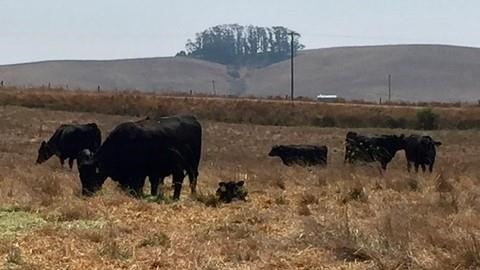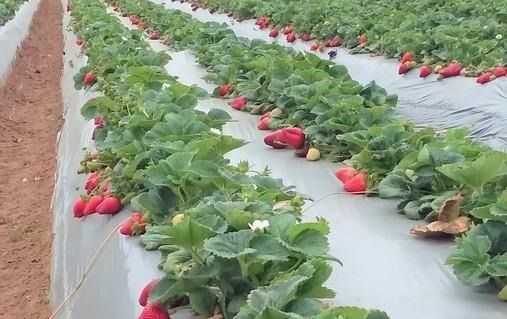By Pamela Kan-Rice
Despite recent rains, the 2020–21 drought has been unusually severe. Low precipitation, coupled with high evaporation has affected irrigated crops and livestock pastures. Yet California farmers and ranchers are adept at adapting. Despite record-setting drought conditions and hundreds of thousands of acres left unplanted, California farms and ranches, as a whole, may generate normal revenue in 2021, according to the authors of a new special issue of ARE Update focusing on the drought.
The 2020 water year (which ran from October 2019 through September 2020), was dry and hot in California, with the warmest April through September since 1895. It was followed by the third driest year since 1895 – receiving about half of the average 20th century rainfall. Consecutive years with record-setting warm, dry conditions have led to higher evaporative demand. Some regions, particularly the Sacramento Basin, have been hit especially hard by this ongoing drought.
California farmers have adapted to the resulting water shortages by transferring scarce irrigation water to crops that have a higher expected net revenue per drop of water, such as fresh produce and nuts, while leaving some fields unplanted. Due to decreased pasture forage, livestock producers have had to cull mature cows and ship more feeder cattle out of state.
“The dairy industry has had strong production and good revenue, but has faced high feed costs in 2021 that reduced net returns,” said special issue co-editor Daniel Sumner, UC Davis agricultural economist.

Due to decreased pasture forage, livestock producers have had to cull mature cows and ship more feeder cattle out of state. Photo by Pam Kan-Rice
The drought's impact on farm revenues and prices in California has varied across crops and regions. Agricultural production on the coast (e.g., vegetables, berries and wine grapes), which accounts for 25% of farm output, is less likely to experience irrigation cutbacks during a drought. Consumers will notice few major price increases for California produce because farmers shifted water to these high-revenue crops in which California specializes.
The special issue on drought concludes with an explanation of policy changes that have improved the California water system in the past and envisions how policy changes might mitigate impacts of future droughts. Legislation such as the Sustainable Groundwater Management Act (SGMA) will facilitate adapting to new climate realities by incentivizing water trading and banking, which allow water users to better allocate water across space and time.
Most groundwater agencies are still assessing the best way to bring their overdrafted groundwater basins into compliance with SGMA, with almost 80% planning to recharge groundwater through increasing supply (e.g., recharge or surface water trading) rather than reducing water demand (e.g., pumping restrictions).
“No one single solution exists for California's water challenges, but there's a lot of potential to make improvements to the current system,” said Ellen Bruno, special issue co-editor and UC Berkeley agricultural economist. “Improving the allocation of water through various policy changes could help water users adapt to water scarcity.”

Consumers will notice few major price increases for California produce because farmers shifted water to high-revenue crops such as strawberries. Photo by Joji Muramoto
ARE Update is a bimonthly magazine published by the Giannini Foundation of Agricultural Economics to educate policymakers and agribusiness professionals about new research or analysis of important topics in agricultural and resource economics. Articles are written by Giannini Foundation members, including University of California faculty and Cooperative Extension specialists in agricultural and resource economics, and university graduate students.
Source : ucanr.edu